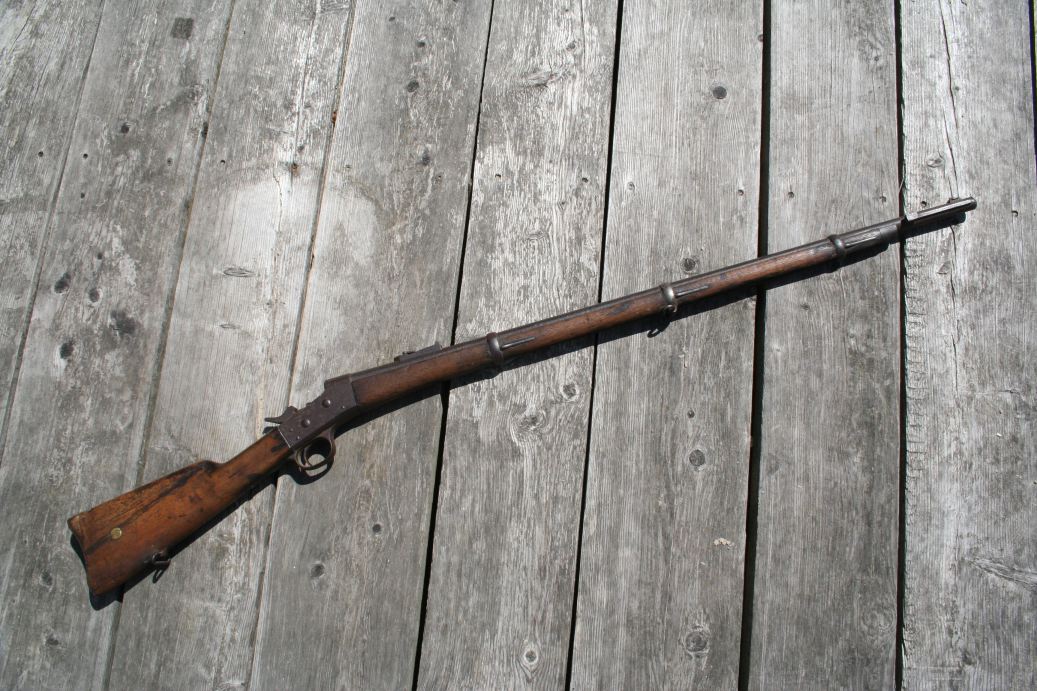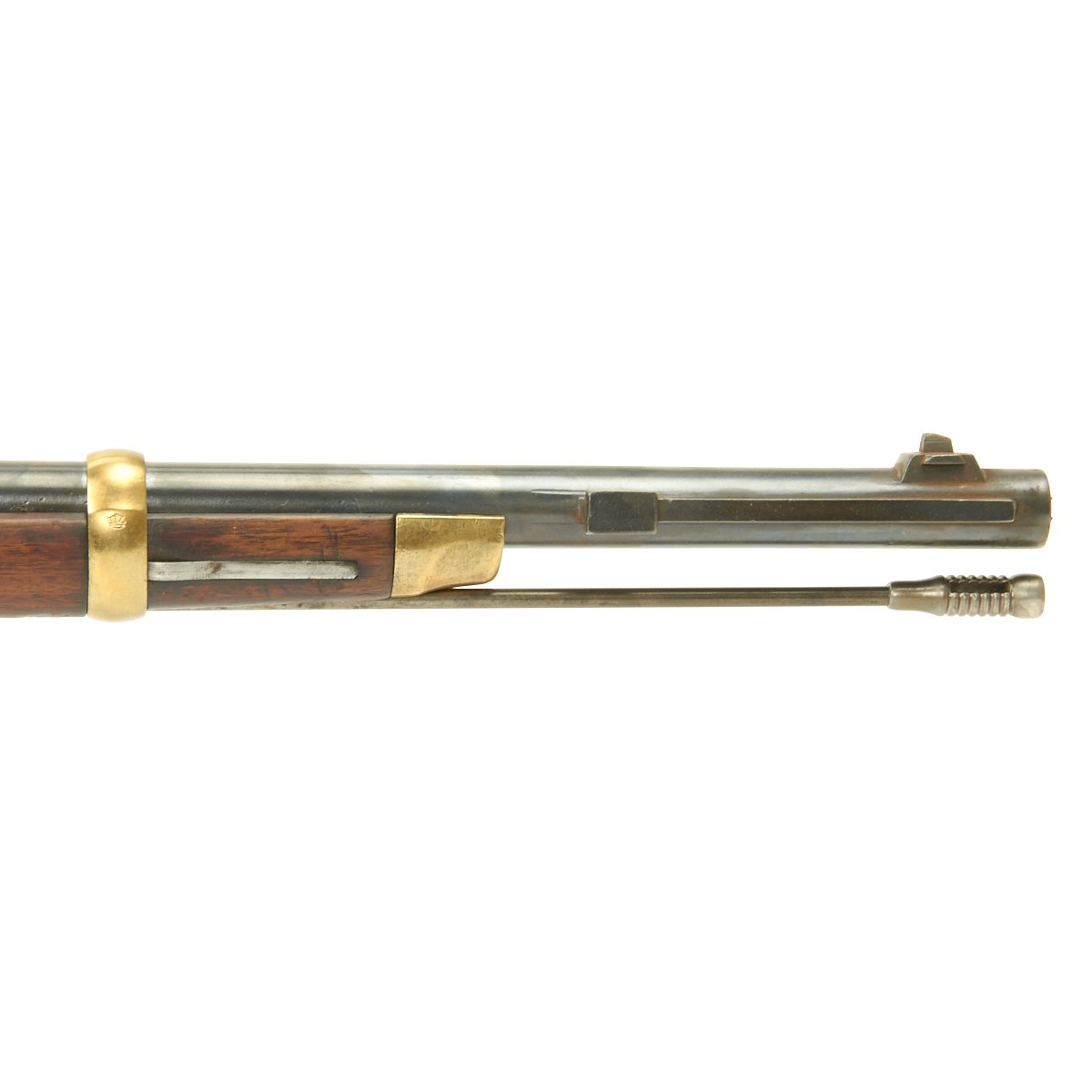


The Werndl-Holub M1867 replaced the Wanzl rifle (which itself was simply a conversion of the Lorenz rifle) which had been designed following the dominance of the Prussian Dreyse Needle Gun during the various conflicts of the mid 1800s. Originally, when the Infantrie (Infantry) or Jager Gewehr (Riflemen) were using the M1867 then the 11mm scharfe Patrone M.67 (11.15x42mmR) cartridge was issued while later the standard issue became the 11mm scharfe Patrone M.77 (11.15x58mmR) which was bottlenecked. The M1867 fired one of two cartridges, depending on when it was used. Likewise the sights were copied on the Argentine M1879 Remington Rolling Block rifle. It was originally chambered for a 12.17x44 rimfire round, a cartridge ballistically similar to the American. The location of the firing pin allows the block (with the pin recessed in the block) to pivot within the receiver, resulting in a smoother action. 'The Model 1867 Remington rolling block rifle was the first metallic cartridge rifle to be adopted by Sweden. The M1867 also borrowed features from older designs, with the firing pin mounted within the block, offset, similar to the Snider Enfield and early "Trapdoor" Springfield rifles. When the hammer is pulled back, the drum can be rotated with the flat lever (located on the drum) to allow acess to the rear of the barrel and breech to load a new cartridge. This mechanism featured an easy to identify rotating drum action, which is allowed to rotate when the hammer is moved. The Werndl-Holub M1867 was built around the breech loading mechanism designed by Werndl.


 0 kommentar(er)
0 kommentar(er)
